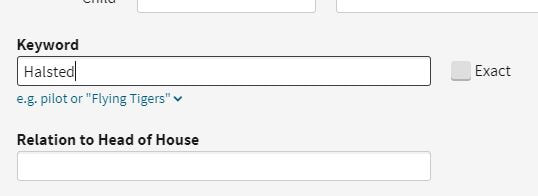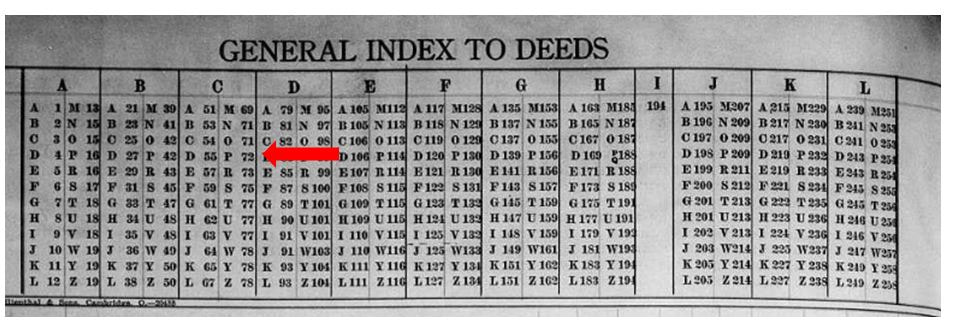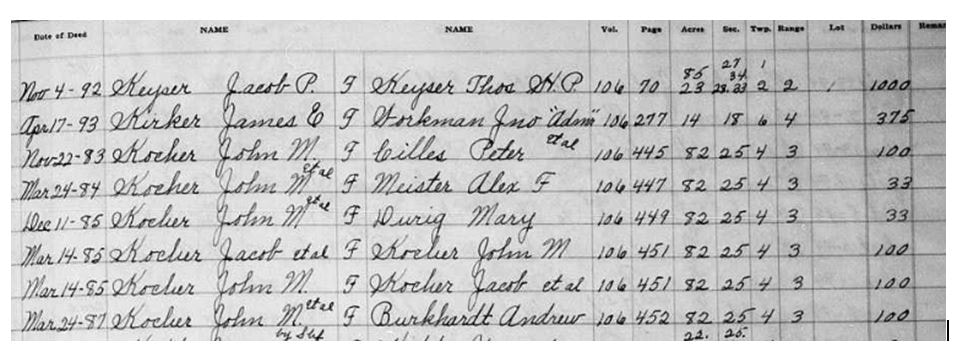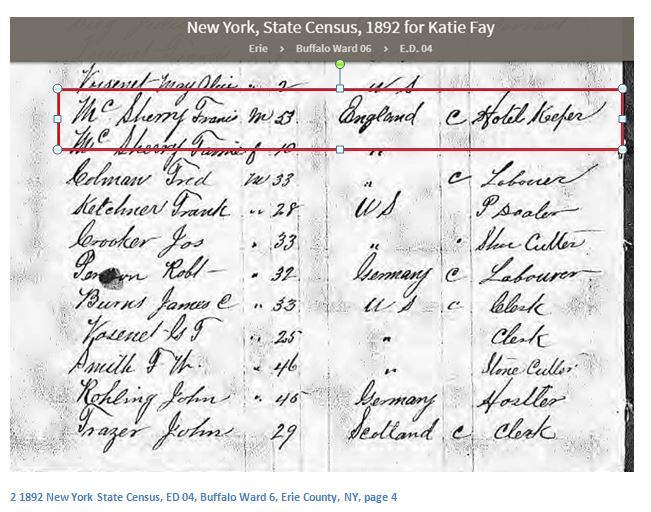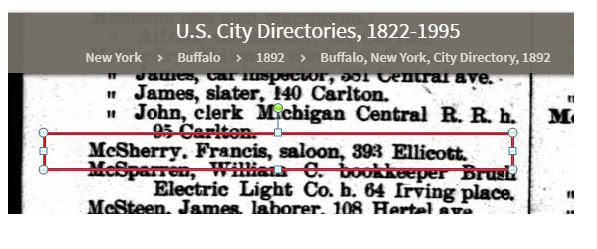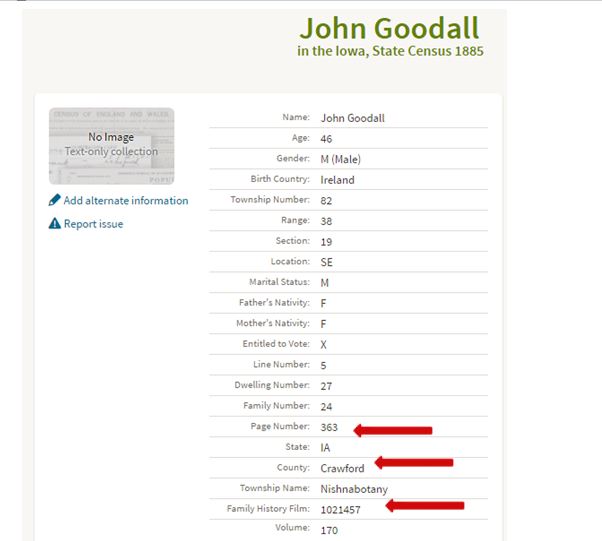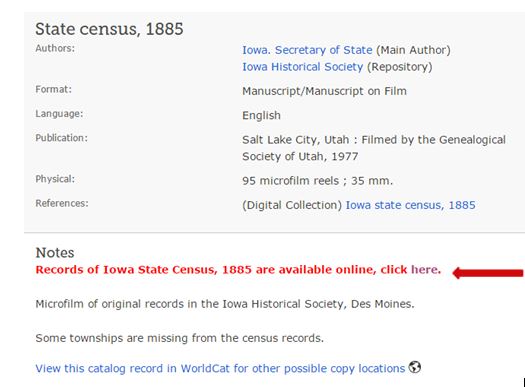|
I’m having a great time these days researching a convicted counterfeiter who served time in the 1930s in Leavenworth Federal Penitentiary. I dropped a bundle ordering his 191-page file from the National Archives in Kansas City, but it may be worth it in entertainment value alone. But I digress… I’m looking at his file and trying to build a profile of him. Part of that includes developing a list of associates, what Elizabeth Shown Mills refers to as a “FAN club” (family and friends, associates, and neighbors.) Several pages in his file have to do with his correspondence while in prison – who he wrote to and who wrote to him. One such contact was a woman, Mrs. Mary Davis of 5644 Halsted Ave, Chicago, identified as his aunt. The correspondence form was stamped “1929.” I thought I might try to find Mary Davis on the 1930 census to see if I could find a clue as to how she might have been his aunt – through his father’s side or his mother’s. I searched on Ancestry for Mary Davis in Chicago, Cook, Illinois in the 1930 US Federal census and got 200 hits. Ugh. Some were far too young to be the aunt of my 42-year-old prisoner. But there were still a lot of hits to go through. On Ancestry’s list of possible results there are six data columns shown: name, parent or spouse name, home in 1930, birth year, birthplace and relation to head of house. Another column on Ancestry’s display says “View Record.” If you hover your cursor over an item in that column, a pop-up window appears showing 15 additional data items plus a list of household members. Ancestry’s basic display only gives six data points, but they have indexed another 15. Think about that. If they’ve indexed them, you can search on them. These additional fields include things like ward of the city and dwelling number (which most people wouldn’t know), but also parents’ birthplace. And street name! I knew from the correspondence log from the prison file that Frank’s aunt Mary Davis lived on Halsted Avenue. I went back to Ancestry and edited the search, adding “Halsted” in the keyword box and now my top result is Mary Davis, born 1858 in Iowa, living at 5436 Halsted. The house number is slightly different than the one on the prison log, but this is a very likely candidate for my guy’s aunt. The take-away – remember to use that Keyword box when searching on Ancestry. It will help you to quickly winnow down a long list of results. Many of those details you see in the pop-up window which appears when you hover over a potential result can be searched using Keyword. Play around also with checking the “exact” box which appears when you use the Keyword field. Now, I’m off to learn everything I can about Mary Davis!
0 Comments
Sometime in the 1970s my dad’s first cousin Thelma Wooster Van Alstyne typed up some genealogy information on her great-grandparents, immigrants from Germany. Her two reports provided information on my great-great grandparents, two immigrants couples, Charles Kircher and his wife Augusta Frühauf who met and married in Germany before emigrating, and Johannes Springer of “Kappeln” in Bavaria and his wife Louisa Caroline Hartman of Hanover, Germany, who came to America separately and were likely introduced to each other by common friends in Syracuse, New York. Thelma’s charts gave the birth, marriage and death dates for these couples and all their descendants she knew about at the time she prepared the charts. In addition to the charts she wrote up a dozen or two paragraphs of “Notes” on each couple. There is not one source cited on any of the notes or descendancy pages. Thelma must have had some documents. There are photocopies of some records from Germany for the Kirchers, including an 1849 passport from the Royal Prussian States and a couple of documents reporting on baptisms which were likely provided by the couple to the pastor who married them. Thelma had the documents transcribed and translated. With some of the other documents I only have copies of the translations, and no idea where the original documents are. God bless Thelma for doing as much as she did. Without it, much of the history would have been lost. I’ve tried to go back and prove what Thelma had in the trees and notes. Most of it was accurate, at least to a degree. I have not found a Kappeln in Bavaria, but there is Kapellen, and using microfilm and digitized records from the Family History Library I found Johannes Sprenger’s baptism record. In fact, for three of those four immigrant great-great grandparents, I found original baptism records, and in several cases I’ve been able to work back another generation or two (or more!) on German soil. But one of them had me stumped. Louisa Caroline Hartman of Hanover. Hanover is the name of a city, as well as a former kingdom, in what is now Germany. It is neither a small nor a very specific place. Here’s all the information about Louisa I had from Thelma’s “Notes on the Springer Family”:[1] Johannes Springer had four brothers and sisters. The Hartmans in Germany had money. Louisa’s parents didn’t want her to come to America, so she probably didn’t get any of the family’s money. The Springer’s in Liverpool[2] were poor. Grandma (Frances) and Aunt Amelia used to pick up sticks for fuel near the salt mine. Relatives in Liverpool and Syracuse: Hartmans (Nellie, Fred, Nick, Amelia Hartman Klassi), Getmens, Bauers (Mrs. Bauer was a Hartman). The descendency chart started with: LOUISA CAROLINE HARTMAN M. 1st JOHANNES SPRINGER B. June 3, 1836 (Hanover, Germany) B. 1835 (Kappeln, State of Bavaria) D. May 1, 1905 (Buried in Union Hill) D. Oct. 3, 187- (Age 42) Liverpool, NY[3] Hanover... Ugh. But the notes listed some Hartman cousins in Liverpool and Syracuse. Nellie, Fred, Nick and Amelia Hartman Klassi. I like that Klassi name – unusual enough to hopefully be easy to find. Sure enough, found an obituary, “Mrs. Frank Klassi Dies at Daughter’s Home.” The article title is wrong, but the text is just what I was looking for: At the residence of her daughter, Mrs Frank Klassi at No. 16- [?] Strong avenue yesterday occurred the death of Mrs. Abbie Frech Hartman, aged 73 years. Surviving her are three daughters, Mrs John L. Bauer, Mrs. Frank Klassi and Miss Nellie Hartman of this city and a son, Fred G. Hartman of Newark, N. J. Funeral services will be held privately at 2:30 o’clock tomorrow afternoon and burial will be at Woodlawn Cemetery.[4] As I searched more for this family I discovered through census records and obituaries the patriarch was Frederick August Hartman. (I think Thelma might have been slightly off listing Nick as a Hartman. He appears to be a cousin on the other, Springer, side. Nick Springer and Sarah Gettman were children of Johannes Springer’s brother Nicholas who lived next door to Louisa and Johannes in Liverpool.) The pieces began to fit together. Louisa Hartman Springer’s daughter, Franklin Abelone was baptized on 14 June 1857 in Liverpool. Her godparents were Frederick Hartman and Abelone Hartman. Cousins. Godfather. Yes, Frederick Hartman was beginning to look a lot like he must be Louisa’s brother. I ordered both Frederick and Louisa’s death certificates. Not cheap to get New York vital records, but surely one of them would tell me the parents’ names and the birthplace in Hanover… And the records came! Louisa was born in… Germany. Her father was Anthony Hartman, born in… Germany. Her mother was Mollie Hartman, born in… Germany. Louisa was 68 years [months and days not givene] at her death on 1 May 1905.[5] Not exactly the specific details I hoped for. What about Fred? Fred’k A. Hartmann, died 19 May 1902 at age 79 years, 3 months and 25 days. He was born in… Germany. He’d been in the US 55 years. His father was Anton and his mother was Amelia, both from… well, you know… Germany.[6] But at least there was some math I could do. I calculated a birthdate of 24 January 1823. If, of course, the unnamed informant on the death certificate knew what they were talking about. The details on the two certificates meshed well enough. Anton and Anthony seemed a solid fit. Mollie is not a far stretch as a nickname for Amelia. Both Frederick and Louisa named daughters Amelia. And there things sat for a year and a half. I tried to work on the problem off and on. My attempts to find a marriage record in Liverpool for Johannes and Louisa met with stonewalling from the likely church where the baptisms of their children and probably their marriage occurred. I reached out to distant cousins, looking for a family bible which might say something. No bible, but my “new” cousin Amy had a fabulous photo album from Louisa’s daughter, Amelia. The album contained several Hartman pictures, including one of Abelone Frech Hartman with all her children, and one of Frederick and Abbie together. But I’m afraid with the scant clues I had: - aprobable birthdate for Fred, first names for parents but no maiden name for Mama, a Kingdom comprising about 14,600 square miles[7] (roughly twice the size of New Jersey)[8], - and little in the way of online records, I just didn’t have the stamina to tackle that problem. So many ancestors, so little time… In January I took a class at the Salt Lake Institute of Genealogy (SLIG)[9] from Warren Bittner, Baerbel Johnson and Daniel Jones on reading Gothic Script and Fraktur. It was a delightful experience, one of the most fun weeks of learning I have ever had. Five days of “code breaking” flew by, not one moment feeling like work. But now I have the confidence to take on those “chicken scratch” records which used to scare me to death. A couple of weeks after SLIG I had to go back to Salt Lake City for some meetings, and I built in some time for more research at the Family History Library. I was getting a bit of help from Daniel on a few bits I couldn’t read in a couple of records. Herr Bitter was there as well and I couldn’t resist sharing how excited I was about my new-found skills. I sat next to him later in the day and he worked at one computer and I at another, but every once in a while he offered a little advice on this or that. I saw him at the library several more times in the next few days. (I do hope I wasn't too much of a pest.) My Hartmann problem in the back of my mind, I thought I’d see if Warren had any ideas. I guess I was right about the size of the problem. When he asked who I was looking for and I said “Frederick Hartman in Hannover,” his response was a brief two words. “I’m sorry.” But a little later he wanted to see what I had on him and I showed him the 1855 New York census for Frederick in Syracuse. It showed he’d been in Syracuse 5 years. He was married and living with his in-laws who reported being in Syracuse 3 years, so it pointed pretty strongly to an immigration year within a couple of years of 1850. Warren said, “Why don’t you look for a passenger list for Frederick. You might find a few, you might find a lot. But it’s worth a shot.” Yeah, right, I thought. My experience with passenger lists has rarely been fruitful. I don’t know the name of the ship my guy came on, I don’t know when, I don’t know if the list for the ship he did come on survived, I don’t know if it was microfilmed… or indexed… or digitized. Was it legible enough that the indexer could come up with a reasonable approximation of the name? If it made it through all those hoops would it say anything more than “Frederick Hartman, age 25, laborer from Germany?” Below is my “typical” passenger list. The columns are: Number on the manifest, Name, Age, Gender, Occupation, The country to which they severally belong, and The country in which they intend to become inhabitants.[10] The name, age and gender columns at least have a bit of variety. The other three are laborer, Germany and U.S. of America. Even a 2-month-old baby on the next pages was a “laborer.” So, no… I didn’t jump right on Warren’s suggestion. But after a few more days of research, I’d exhausted the questions on the other “findable” lines and so I thought I’d at least give it a shot. I searched in Ancestry’s New York Passenger Lists database for a Frederick Hartman arriving in 1850 +/- two years. I got only 20 hits, so not too many to go through. Some I could immediately throw out based on the passenger’s age. Only one had a birth year of 1823, so I checked that one first. The Columbus arrived 6 April 1850 from Bremen. What I saw on that list had me drooling. The column headings might be a bit hard to read due to the ink splotches, but they are: Name, Last Dwelling Place, Occupation, Age, Destination, [no heading, but the entries show number of boxes of possessions] and Sex.[11] Look at those letters![12] Thank you D. Meyer, Master of Columbus. You are my hero! Your second grade teacher who taught you that beautiful penmanship is my hero, too! So what do we have here? Frederick Hartmann, from Makensen,[13] a farmer, age 27, uncertain about his destination, one box, male. Next line, Caroline Hartmann, [ditto, also from Makensen], 22, destination Pitsville [?], 1 box, female. Could this be Louisa Caroline? She’s a little old from what I know about Louisa, but if she subtracted a little in her later years (many women did) and added a few on this manifest (maybe she worried about appearing too young to support herself, so she tried to be a little older) she might be within range to be Louisa. But I’m pretty sure Frederick and, Caroline aren’t a married couple because they’re not going to the same destination. And look at 8, 9 and 11 lines below Caroline – Wilhelm Benzinger, Matthias Zimmermann and August Zimmermann – all three of them are going to Syracuse, where Frederick wound up. Imagine if you will, a ship full of people, lining up to give super scribe, D. Meyer, their particulars. Frederick really can’t decide where he’s going but there’s a trio just a bit behind him in line, all of them talking up the many opportunities of Salt City and Frederick is convinced. Do I know this is really what happened? Nope. But hey, it makes sense, right? I really like this passenger list. I could find it. It is legible. It has really specific information like Makensen and Syracuse. I sooooo want this list to be mine! Allow me a little digression… When I was a kid, I chewed a lot of Bazooka bubblegum, the pink stuff with the comics inside the wrappers. Often hard as a rock, but enough spit and you could get a pretty good chew. I cannot tell you much about the comics. But one, for some obscure reason, has stuck with me the last 50 years. Bazooka Joe is on his knees beneath a street lamp, clearly looking for something. His friend offers to help. Next frame his friend asks if this is where Joe lost his thingamabob. “No,” says Joe. “I lost it over there.” “Then why are we looking here?” “The light’s better over here.” I feel that way a lot in genealogy. Some record isn’t from where my ancestor was from, and it’s probably not them, but the “light” is better on the record. It’s legible. It’s got places - “Makensen!” and “Syracuse!” That is some great light! It just HAS to be my people. Please, please, please, genealogy gods, can this be my people? Pretty pretty please. The light is so good on this one. Well, I have absolutely no idea if the Hartmanns on the Columbus are my people. But Warren has given me the name of Detlef, a researcher in Hannover, who used to work at the Landeskirchliches Archiv Hannover. I’ve already emailed Detlef about a baptism record on a family in Einbeck, maybe he could look for a Mackensen record, too. So I gave Detlef those details, and crossed my fingers. Three days ago I heard back from Detlef. The microfiche from Mackensen was horrid, difficult to read and not worth taking a picture of. But it was legible enough at least to find some relevant entries. He found two baptisms on that crummy microfiche. Two children of Heinrich Anton Hartmann, a Schumacher [shoemaker], and his wife Johanne Amalie, born Schollens. Friedrich August Hartman, born in Mackensen 24 January 1823. And Johanne Dorothee Caroline Hartmann, born in Mackensen 14 March 1828.[14] Frederick’s was exact date calculated from his death certificate. That informant did know what they were talking about! Caroline’s baptism name doesn’t include the name Louisa. The birthdate is consistent with the Columbus passenger Caroline Hartmann, but the birthdate does not match Thelma’s details on Louisa Caroline. I think this might be another sister. My experience with my German families indicates children are often christened with three or even four names. The “first” name is often the name of a godparent, but the child may be called by one of the other names. When you’re doling the names out three-to-a-kid you run through them pretty quickly, so often the “extra” names are used for multiple children. So Louisa Caroline’s baptism record is still waiting for me to lay eyes on it, but I’m pretty darn sure I’ll find it in the parish registers of Mackensen. Can’t wait! Research takeaways
[1] A note on the names – the records in Germany use the spelling “Sprenger.” In America they use “Springer.” I will use the Springer variant unless I am talking about a record which uses Sprenger. [2] Liverpool is a small town on Lake Onondaga, northwest of Syracuse, where Johannes and Louisa settled. [3] “John” Sprenger died 3 October 1867 in Liverpool. His gravestone says he was 42 years old. This is close to the baptism record I found for Johannes Sprenger, born 30 April 1827, son of Jakob Sprenger and Elisabeth Scheib in the church register for Drusweiler, FHL microfilm 1457537 [4] “Mrs Frank Klassi Dies at Daughter’s Home,” Syracuse Post Standard, 3 December 1909, p. 7, col. 3; digital images FultonHistory (http://fultonhistory.com/Fulton.html : accessed 22 February 2019). [5] Monroe County, New York, death certificate no. 114 (1905), Louisa Bowman; Office of Vital Records, Rochester. [6] Onondaga County, Verified Transcript from the Register of Deaths, Register no. Vol. F, p. 101 (1902), Fred’k A. Hartmann; Office of Vital Statistics, Syracuse. [7]“Hannover,”GlobalSecurity.org (https://www.globalsecurity.org/military/world/europe/de-hanover.htm : accessed 22 February 2019). [8] “Size of States,” State Symbols USA (https://statesymbolsusa.org/symbol-official-item/national-us/uncategorized/states-size : accessed 22 February 2019). [9] Utah Genealogical Association, SLIG - https://ugagenealogy.org/aem.php?eid=36 [10] “New York, Passenger Lists, 1820-1957,” digital images, Ancestry (http://ancestry.com : accessed 14 December 2018), manifest, Bark Davenport, 9 May 1849, page not numbered, lines 125-130; citing National Archives and Records Administration (NARA), microfilm publication M237 (1820-1897), Roll 79. age 2 months; citing National Archives and Records Administration (NARA), microfilm publication M237 (1820-1897), Roll 87. [11] “New York, Passenger Lists, 1820-1957,” digital images, Ancestry (http://ancestry.com : accessed 8 February 2019), manifest, Columbus, arrival 6 May 1850, page 1 > New York, Passenger and Crew Lists (including Castle Garden and Ellis Island), 1820-1957 > Roll M237, 1820-1897 > Roll 087 > image 451. [12] Ibid, pg. 3, image 453. [13] According to Meyersgaz.org, the standard spelling is Mackensen. [14] Detlef Baehre, Hannover, Germany [(E-Address for private use)], to author, email, 19 February 2019, “Re: Christian Friedrich Gottlieb Kircher 1789 birth record at Kirchenbuchamt on Hildesheimer Str.” It just can’t be said enough. Make friends with an archivist. The archivists I know are a special breed – history geeks with a penchant for organizing things and a yen to ferret out obscure and unseen treasures. They have so many resources at their disposal, and their job is to share!
I am writing a family sketch on my great-grandparents, Tom and Mary (Ahern) Bradley for my ProGen study course. The Bradley’s settled in Tiburon, California just as Tom’s employer, the California Northwestern Railroad (later the Northwestern Pacific), moved its terminus there around 1890. Their children and grandchildren grew up in Tiburon. The Bradley family had many connections with this small town on San Francisco Bay. I knew the Belvedere-Tiburon Landmark’s Society had some materials in their archive that my father and some of his siblings had donated, so I checked their catalog online and found a few items pertinent to my research, including a couple of oral histories. I reached out to the archivist, and boy, did I ever get lucky! Dave Gotz emailed some documents and photographs including a transcript of an oral history interview with my great-aunt Miriam “Brownie” Bradley. He’s put a few more things in the mail to me. He’s answering questions that continue to pop into my mind, and now that he knows I exist, he’s even sending me cool materials from the Society’s collection – pictures and newspaper clippings that I didn’t even know existed. But he did. Because he’s an archivist! The best treasure that arrived yesterday was a link to a video file of an oral history interview with my aunts Mary King and Sr. Bertha Kircher, recorded in October 1994. Mary died in 1996 and Bertha in 1999 but for half an hour yesterday I had these two dear women visiting with me in my living room telling me stories of Tiburon a century ago. Seeing them as I so fondly remember them, hearing their voices and unique ways of talking brought back a flood of my own childhood memories. Make friends with an archivist. They’re waiting with a treasure for you! I love FamilySearch. I love FamilySearch more every day. The records I have been able to find for my family just in the last week have included an 1854 church marriage record from County Durham in England, 1855 and 1857 baptismal records for that couple’s son and daughter, an 1885 Champaign County, Illinois marriage record, a 1931 Pierce County, Washington death certificate and more. I found all those images, for free, in just minutes, all from the comfort of my living room. Every day, FamilySearch adds more images to their vast collection of digitized records, which any researcher, anywhere in the world, can access to learn more about their family. Many of these collections are not searchable by name on FamilySearch, but there are ways to browse the collections of images to find what you want. For example in addition to the volumes of death certificates for the City of Los Angeles, FamilySearch has also digitized the indexes to those volumes. Search for a name in the index volume to find the certificate number, and then look in the film of death certificates to find the actual certificate. But I want to caution you a bit about the indexes. Sometimes FamilySearch puts the index books in the wrong place. What do I mean? Here’s an example. FamilySearch has a wonderful collection, “California, County Birth and Death Records, 1800-1994.” (https://familysearch.org/search/collection/2001287). If you look on the page, you will see search boxes, but when you read the description, you’ll see some limitations – “The name index for death records covers Stockton, Lodi and Manteca cities and San Benito and San Joaquin counties.” If you want records for other counties, scroll to the bottom of this page to where it says “Browse through 2,915,415 images.” When you click on that link, you’ll see a list of counties and towns. Here’s a small portion of that list. “Los Angeles, Long Beach,” “Los Angeles, Los Angeles,” and “Los Angeles, Pasadena” will link you to records for those three cities, while plain old “Los Angeles” will give you records for the County of Los Angeles. On FamilySearch when you drill down and click on the “Los Angeles, Los Angeles” link. Over 700 links will appear, starting with links to Birth Certificates, then Death Certificates, then finally, at the bottom of the list are the Death Indexes. Since these records appear under the title “Los Angeles, Los Angeles, they should be just for the City of Los Angeles. Should be. But this is where the researcher needs to beware. Here’s just one selection from the titles of the indexes: Look carefully and you will see some overlap. “Death index 1928-1929 vol 14, A-L” and the same for “…M-Z.” But the item immediately below that is “Death index 1928 vol 22, A-Z” and then “Death index 1929 vol 23, A-Z.” Same years. Why are they repeated, and why do they have different volume numbers? Here’s what I see when I click on the 1928-1929 volume 14 item: Image 1 of 308 shows the cover of the book, perhaps the most important image in that set. Because, although FamilySearch has placed this digitized item in the “Los Angeles, Los Angeles” section of records, it is NOT for the City of Los Angeles, it’s for LA County. Here is image 5 of the “Death index 1928 vol 22, A-Z”: You can see it says “Los Angeles City” on the spine of the book. If you find a certificate number in Volume 14, the book for Los Angeles County, and then try to look for it in the City of Los Angeles death records for 1928, it won’t be there. You’ll find whosoever's LA city death certificate has that number. Be sure to look at the image of the spine of the book of records you're to see what it covers before you go diving into the index! And the second issue is that when you look at plain old Los Angeles County, you won’t see an index to the LA county death certificates… because FamilySearch has incorrectly placed the index for the county under the “Los Angeles, Los Angeles” title. I have alerted FamilySearch to this issue and hopefully they will correct it soon. This is just one instance of digital images being put in an incorrect location on FamilySearch. I know that there are probably a few more. If you don’t see what you expect to see, dig a little deeper, look at the images of the book covers, and see if you can figure out where the image you’re looking for might be. With all the great documents FamilySearch give me, this researcher is OK with having to beware and dig a little deeper once in a while. Counties across the country use different methods to index their deeds, probates, naturalizations and other records. They are generally based on some alphabetical combination. It may be as simple as using separate sections of the index book for each surname that begins with a particular letter. All the grantors whose surnames begin with “A” are listed in order of when they recorded the deed. Or it might be a more complicated arrangement using two or three letters in the surname, perhaps combined with the first letter of the given name. FamilySearch continues to digitize more records, making available record images that are not searchable by name and can only be browsed. But if you know how to use these county level indexes, you should have no trouble locating your ancestor in these valuable records. I’ve written before about the Graves Tabular Initial Index and a West Virginia will index. I’ve been working on a presentation on the ins and outs of indexes for the Lewis County Genealogical Society next month, so I thought I’d write about using another indexing scheme. Most counties I have run across have a set of Grantor indexes listing people who sold (or otherwise transferred) property, along with a similar set of Grantee indexes for people who purchased property. But Belmont County, Ohio combines the two into one set of books. How does that work? To start with, you need to know the surname and first name of the party you are interested in. You can access the deed indexes for Belmont at https://familysearch.org/search/catalog/247145. Across the top of each page in the Deed Index for Belmont is a chart. The first letter of the surnames are listed across the page, and beneath each of these letters are the 26 letters corresponding to the first letter of the given name. Next to each of these letters is a page number where you will find that Last Name/Given Name combination listed. Here’s the chart shown at the top of all the left-hand pages in the books: I should find any transactions for Peter Cilles on page 72. And when I go to page 72, here’s what I see for Peter: You can see that there are 2 columns with names. The index only applies to the first column. Between the two “Name” columns is a narrow strip with either “to” or “F” (for “From”) recorded. In the first entry, Peter Chilles et al are transferring property TO Jno. M. Korcher. In the third entry, P. R. Cook et al are acquiring property FROM Mary Smith et al. Looking to the right we can see the volumes and pages where we can find the actual deeds (and get some idea who theses “et al” others actually are.) The index also gives a very brief description of the property, showing the number of acres, the Section, Township and Range where the property is located and what the transfer price was. In this case Peter Cilles is my person of interest, and I now have all the information I need to find his deed. If Jno Korcher was my guy, the letter table above would point me to find the corresponding entry in the same book on page 225. The transaction with Peter Cilles is the third one down, but you can see that John Korcher acquired a number of pieces of property in Section 25 around that same time. This kind of index is an efficient way to search. You can find all the transactions for your ancestor for a given time span, both buying and selling, all in the same book. Happy hunting! Boy, wouldn’t you like to be able to find your great-grandparents marriage record? But you feel like you have no idea where to start. Just take it one step at a time, and wring every clue out of every document, even those clues that are hidden. I’m searching for the marriage record of Joseph Lawson and his wife, Katherine Fay. They married in 1894, according to a history book about the maritime history of the Great Lakes.[1] Though the 1890 US Federal census was destroyed, I’m fortunate that New York State took a census in 1892 and I’ve found likely candidates for both Joseph and Katherine in Buffalo. But the big problem with that 1892 census is there are no addresses on it. If I knew what her address was in 1892, I’d have some idea where she likely went to church, which might give me a clue where she was married so I can get the parish register. But with no address on the census, and the young lady I’m looking at a servant girl who isn’t listed in a city directory, I’m kind of stuck. Katie is listed Fourth Election District of the Sixth Ward. I could probably do some research to figure out what that is, but it may be a big area, and I still won’t know her address. But I can dig a little into Katie’s household. The 1892 census in Buffalo doesn’t separate the households in any way. Katie is the third name down, then I see a different surname, and then a bunch of people named Dechert, which looks like a new household to me. So I just need to scroll up Katie’s household in the previous column to see if I can find someone who looks like the head of Katie’s household. The household has clerks and laborers, a hostler and some others, but as I scroll up, I see Francis McSherry a hotel keeper. This looks like his household and the dozen or so names beneath his are boarders in his establishment. And I know a man with a hotel is likely to be listed in a city directory. 393 Ellicott. I have an address for Francis, which give me an address for Katie. And using that same city directory I can see Joseph Lawson lived at 420 Fargo in Buffalo. With that address it ought to be pretty easy to map the Catholic churches around their two addresses, and start looking for their marriage record. Wring every clue out of your documents, even those hidden clues. [1] Profile of Joseph Lawson from History of the Great Lakes,( http://www.maritimehistoryofthegreatlakes.ca/GreatLakes/Documents/HGL2/default.asp?ID=s683 – accessed 25 July 2017) I recently presented “Censational Census Strategies” for Legacy Family Tree Webinars. In it, I mentioned the second enumeration to the 1870 census. The 1870 census is purported to be the worst US census ever taken.[1] There were enough people missed and enough errors that a second enumeration was ordered for a few large cities, including New York City. This second enumeration was taken in January of 1871. How can you find this second enumeration? If you have an Ancestry.com subscription, you can do a search for the 1870 census. Once you get there, on the right side of the screen you will see "Browse this collection" and you can specify your state (NY) county (NY) and then use the dropdown for the town and you will see something like: “New York Ward 1 District 1,” then ”New York Ward 1 District 1 (2nd Enum).” You can then browse through the pages. However, you may not know the Enumeration District (ED.) If you don’t have an Ancestry.com subscription, you may have access to HeritageQuest databases from home using your library card. This is one of the databases many libraries provide to their patrons, for free, from home. Look on your library’s website for something like “Research“ or “Databases” and then for a Genealogy or History category. Again, if you don’t know your ancestor’s ED, this might not be so useful. I would suggest you just do a straight up name search for your ancestor, and try to find them on both enumerations. If you can only find them on one, pick 3 or 4 neighbors on that enumeration, and then look for them on the other enumeration, and see if you can't find your ancestor. Hope that helps! [1] http://stevemorse.org/census/1870secondenumeration.html I wrote a blog post in February, “No Image Available? Maybe There is One!” In it, I described searching on FamilySearch and coming with a hit on an index record, complete with the dreaded “No image available” message. I outline a workaround where sometimes you can find the image on FamilySearch. A similar situation sometimes happens with an Ancestry.com search. I recently found a result on Ancestry for an 1885 Iowa census record. In my search for John Goodall, I got this screen on Ancestry. Note the “No Image – Text-only Collection” notation on the top left. But near to the bottom are two important notations – “Family History Film: 1021457” and a few lines above that “Page Number: 363.” Let’s see what I can find on FamilySearch! On familysearch.org/catalog/search, I typed the film number in the box labeled “Film/Fiche Number” and clicked “Search.” I got one result. When I clicked on “State census, 1885” I got a couple of options. Where it says “Records of Iowa State Census, 1885 are available online, click here” I clicked and entered John Goodall and Crawford in the name and residence boxes. My first hit looked like the one I was looking for: When I clicked on the document icon, I get a transcription of the record, a source citation, and a link to the census image. Here's the image In this case, FamilySearch had the “Records of Iowa State Census, 1885 are available online, click here” button, which took me to a search page. If they hadn’t had that direct link, I could have scrolled further down the “State Census, 1885” page until I got to film number 1021457. Again, with the magnifying glass image, I was able to search the film, but even without the search capability, the presence of the camera icon is a clue that I can browse the records. I’ll be linked to the correct film and will just need to poke around until I find page 363. Note that sometimes when you click on the camera icon, you’ll get a message that the records are only available for viewing at a Family History center. It all depends on the agreement that FamilySearch has with the agency who owns the records. I like to save these searches up, and monthly or so make a trip to my local Family History Center and look at all the images I can’t get from home. But remember, when you’re searching on Ancestry and they won’t show you the record image, if you see a reference to a “Family History Film” follow my steps and see if you can find the image on FamilySearch. For free, even! Score!!! On Sunday I posted a transcription of a letter my uncle wrote to my grandparents on 8 July 1942 describing leaving his home in San Francisco and traveling to Navy boot camp in San Diego.
When you are reading and sharing your family letters, it will be a much richer experience if you take the time to understand the context in which the letter was written. Here are some ideas to get you started in researching the context. Look for images. Warren mentioned several places in his letter, among them the Federal Building in San Francisco and the Santa Fe railroad depot in Los Angeles. I was able to do image searches on google and find historical photos of those buildings. Libraries and state archives are another good resource for finding vintage images of buildings. With these searches I was able to go back in time and see what my uncle saw. I knew that Warren was in the navy, and I was able to use Fold3 to discover a bit more about his experience. A 31 December 1943 muster roll from the submarine Searaven showed an enlistment date of 6 July 1942, just two days before he wrote the letter. That immediately got me thinking about what my 21-year-old uncle might have been feeling – excitement, fear, homesickness and more. I thought about the date. July 6 was a Monday. Just two days after Independence Day, the most patriotic of holidays. I imagine the first 4th of July after Pearl Harbor must have held some particularly impassioned celebrations. Might those have perhaps prompted Warren to enlist? What was going on in San Francisco and the world at that time? I looked at the San Francisco Chronicle and found some answers. On Sunday 5 July 1945, page 1 of the comics ran the cartoon, “Terry and the Pirates.” In this strip, the evil Chinese captor threatens Muzz and derides her independence. Mazz ponders the words of the Declaration of Independence regarding the inalienable rights of life, liberty and the pursuit of happiness and how we must invest in our futures to keep those rights. Elsewhere in the same paper, above the masthead on page 1 of the news section, was a striking photograph, the full width of the page, captioned “Yesterday, San Francisco saw a parade. San Francisco has seen other parades, many of them, but never one like this. For passing grimly down Market street marched sudden death. This was typified by a 3200-man combat team of the Army of the United States. Armed to the teeth, this unit, however, was not unique. It was only representative of hundreds of other such units in the United States and over the world ready – and anxious – for a scrap. Above, infantrymen of the unit march by with fixed baoynets.”[i] Other page 1 stories included “New Zealanders Pile Into Rommell; The Tide MAY Be Turning in Battle of Egypt,” “First Yank Flyers Skim Dutch Housetops to Bomb 3 Airdromes in Nazi Europe” and more.[ii] It seems that every day the first several pages of the Chronicle were filled with accounts of the war. Warren must have had those stories in his mind when he enlisted and as he wrote his parents of his experiences as a new recruit. When you’re reading old correspondence, make sure you spend some time studying the history, reading the local newspapers of the time, and finding images to make your family letters and the people who wrote them come alive. [i] San Francisco Chronicle, 5 July 1942, page 1, col 1. [ii] San Francisco Chronicle, 5 July 1942, page 1 I was recently looking for Van Wert County, Ohio records. On Linkependium in the Estate Records category there was a link to Ancestry.com’s “Ohio Wills and Probate Records, 1786-1998.” I reasoned Linkpendium wouldn’t have sent me to Ancestry if it didn’t have any records for Van Wert. But when I searched for some surnames that I knew had probates in Van Wert County, those didn’t show up in Ancestry’s list of results. Finally I just searched with NO surname and "Van Wert County and I got 2509 results! And I’m afraid none of the results were terribly useful. You can see below that on page 1 of results, not one of them has a name and only 2 even have dates: It’s not until page 25 of the results that any additional entries with dates show up, and still they don't show names. In fact in the entire list of results, all 51 pages, no names are listed. None. I clicked on a random item on Page 37 of the results, an 11 Jun 1888 probate. The abstract entry gives me the date and place but no name. When I click on the image, I can see quite clearly a probate record for Anthony McQueen, deceased.  If you try to use the search boxes to find Anthony McQueen, you will come up empty, not because there is no record, but because Ancestry has not indexed this particular set of records by name for this place and time. On the search page for “Ohio Wills and Probate Records, 1786-1998” Ancestry describes the collection, saying: "The records come from a collection of microfilm that took years to compile. They have been brought together from multiple courthouses over time to give you a single source to search. Some localities and time periods may not be included because they were not available to be acquired as part of this collection, or the records may have been lost or destroyed before the effort to collect them all began… For details on which counties and records are included in this collection, please explore the browse menu.” If you “Browse,” you see Van Wert is one of the counties with records. Ancestry’s search page has boxes, but because they have not indexed the Van Wert records by name, the search boxes are worthless. That doesn’t mean the records aren’t there. It only means the records are not searchable, they are only browsable. But Ancestry doesn’t give you any clues that this is the case. To me, the mere presences of the search boxes on the screen below should indicate these records are searchable. The takeaway here… On any search on Ancestry, if you don’t get a hit, don’t immediately walk away. First, search for a very common name, something like Smith or Brown, which ought to be found at least once in the records. If you still come up with no result, try searching just by place with no name in the search boxes. If you come up with no result, this probably means Ancestry doesn’t have records of that type for that location. But if you get some "hits" on you no-name search, Ancestry probably has some records and you'll have to figure out how to browse through them. Browsing isn't always the speediest process. But by being willing to try a No-Name search you might discover that there are records. One more thing about these records -- to me they look a lot like the digitized films from FamilySearch. You may have an easier time going directly to FamilySearch and browsing there. I find the interface on FamilySearch provides a clearer way to recognize which records are Browse-only and an easier method to see all the browsable items in the particular collection. For another post about browsing on FamilySearch see "Understanding Indexes in County Records - Graves Tabular Initial Index" which talks about just one of the many kinds of indexes that make browsing easier. |
AuthorMary Kircher Roddy is a genealogist, writer and lecturer, always looking for the story. Her blog is a combination of the stories she has found and the tools she used to find them. Archives
April 2021
Categories
All
|

